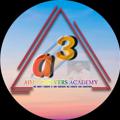Question 1 :
In quadrilateral ABCD, $\angle A + \angle D = 180^{\circ}$. What special name can be given to this quadrilateral?
Question 2 :
<img style='object-fit:contain' src='https://teachmint.storage.googleapis.com/question_assets/cbse_ncert/61b1d204f59b460d7261f520.PNG' />
Using the above fig, we can say that if each pair of opposite sides of a quadrilateral is equal, then it is a _______________.
Question 3 :
State true or false : A quadrilateral is a parallelogram, if its opposite sides are equal.
Question 4 :
ABCD is a parallelogram. If its diagonals are equal, then find the value of $\angle ABC$.
Question 5 :
State true or false: If three out of four points are collinear, we get a triangle
Question 6 :
<img style='object-fit:contain' src='https://teachmint.storage.googleapis.com/question_assets/cbse_ncert/61b1d207f59b460d7261f523.PNG' />
Using the above fig, we can say that the diagonals of a parallelogram ___________ each other.
Question 7 :
<img style='object-fit:contain' src='https://teachmint.storage.googleapis.com/question_assets/cbse_ncert/61b1d20af59b460d7261f527.PNG' />
Using the above fig, identify the quadrilateral formed by the angular bisectors of all the angles of a parallelogram.
Question 11 :
ABCD is a rectangle in which diagonal AC bisects ∠ A as well as ∠ C. ABCD is a _________.
Question 12 :
<img style='object-fit:contain' src='https://teachmint.storage.googleapis.com/question_assets/cbse_ncert/61b1d213f59b460d7261f535.PNG' />
In parallelogram ABCD shown in the fig above, two points P and Q are taken on diagonal BD such that DP = BQ. Is AQ = CP ?
Question 13 :
<img style='object-fit:contain' src='https://teachmint.storage.googleapis.com/question_assets/cbse_ncert/61b1d21af59b460d7261f53f.PNG' />
ABCD is a trapezium given in the above fig in which AB || CD and AD = BC. ∠ C and ∠ D are __________.
Question 14 :
E and F are respectively the mid-points of the non-parallel sides AD and BC of a trapezium ABCD. What would be the value of EF?
Question 15 :
State true or false : Diagonals of a rectangle bisect each other and are equal and vice-versa.




















